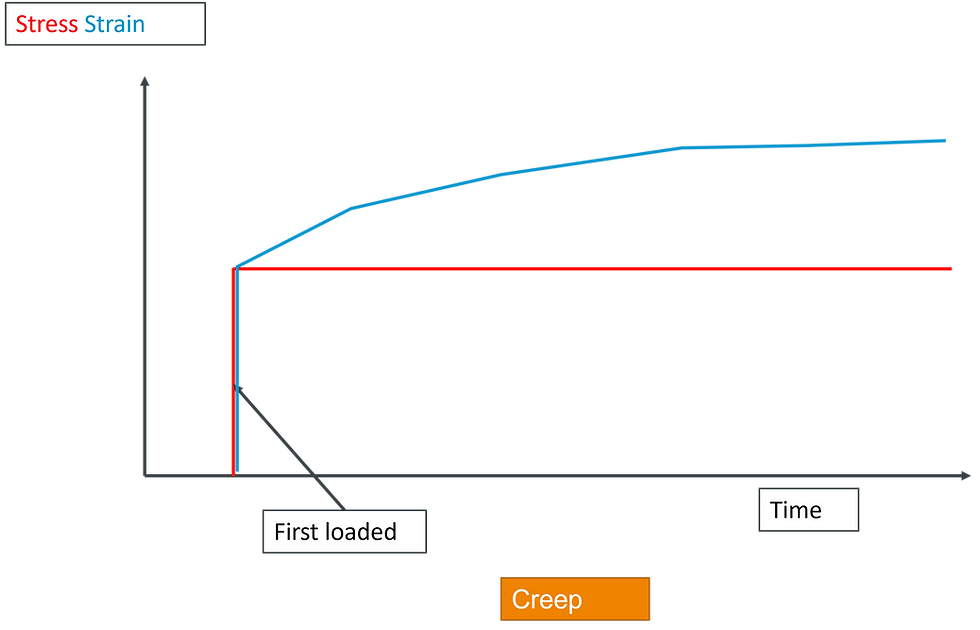Plastic analysis of reinforced concrete – plastic hinge, moment-curvature and moment-stiffness
- Si Shen

- May 18, 2021
- 4 min read
What is plastic hinge?
A plastic hinge is an analytical approach of assigning a node of free rotation to a linear member (e.g. beam). This approach is based on the phenomenon of cracking of concrete and yielding of steel subject to loadings, as observed in reality. In the presence of plastic hinges, bending moment will be capped at certain level at the hinge location, with the excess re-distributed into other areas of the beam. This is very important in situations of extreme transient heavy loadings, such as collision, impact and seismic. Normally in such scenarios, the design requirement is such that the structure can suffer moderate (repairable) damage but must not collapse. Utilising plastic hinges can tap out fuller potential of the structure and achieve an economic design. Plastic hinges can not be assigned freely anywhere at an engineer’s will – there are conditions attached to it.

The moment-curvature diagram
To better understand the plastic hinge, the moment-curvature diagram should be introduced. The moment-curvature diagram tells a story of the behaviour of a linear structure (e.g. a beam/column) subject to flexural loadings (bending). As we can see as the structure is bent, i.e. the curvature increases, there will be more and more bending moment built in to the structure, increasing roughly linearly with the curvature, until a rounded turning point where the moment struggles to increase, and stays almost flat as the structure is bent further. The structure snaps as the ultimate bending it is able to take is reached. The rounded turning point is the point when the plastic hinge starts to develop, as concrete starts to crack and then reinforcement starts to yield.

The moment-stiffness diagram
How does the stiffness of the concrete change when it cracks? The moment-stiffness diagram tells the story. It is another angle to look at the plastic hinge. Within the low bending moment region, where concrete remains uncracked, all behaviour is linear elastic, and the stiffness of the section remains largely unchanged. It starts to round down as bending moment increases to a level high enough to form cracking in the concrete. Cracking starts off at micro levels and as soon as big cracks kick in, the section stiffness drops off a cliff, until it stabilises when the reinforcement starts to yield. This is the point where plastic hinge is formed. The residual stiffness remains roughly constant as yielding progresses until it snaps in the end.

How to qualify for a plastic hinge?
Since it is called a ‘hinge’, sufficient rotational capacity is a must, to ensure it can rotate to a sufficient degree of freedom to qualify as a hinge. In reinforced concrete design, the rotational capacity of a plastic hinge is affected by the ductility of both the concrete and the steel. Steel reinforcement has a lot more ductility compared to concrete (10 times or more). For comparison, steel normally has around 5% to 10% ultimate strain, whereas concrete only has around 0.35% to 0.5%. Therefore, for a plastic hinge to be valid, tensile stress is much more favourable to compressive stress, because tensile stress is resisted by steel (high ductility) whereas compressive stress is resisted by concrete (low ductility).
What we can also observe in the moment-curvature diagram, is that it changes for a given cross section as reinforcement changes. Generally speaking, within certain range, a high dosage of reinforcement generally increases the maximum bending moment the section can take, but reduces the ductility of the plastic hinge, resulting in lower rotational capacity. This is because heavy reinforcement delays the yielding of steel, making concrete fail in compression relatively earlier. This is an important reason why design codes set a maximum limit on reinforcement ratio.

For this reason, to ensure sufficient ductility in the plastic hinge, design codes limit the position of the neutral axis to be less than half of the effective section depth. As the applied bending moment increases, the depth of neutral axis gets pushed down, at the same time forcing more reinforcement to be put into the section to prevent yielding of reinforcement. In the UK, the position of the neutral axis limited to 45% of the effective depth, to ensure ductile failure. When the neutral axis stands at 60% of the effective depth, the section has tapped out all of its potentials.
Plastic hinge with axial forces
The situation gets a bit more complicated for columns and struts which are also subject to axial forces in addition to the bending. Therefore permanent axial compression locked into the section, either by external loadings or prestressing, especially at a high magnitude, compromises the rotational capacity of the plastic hinge. This is because locked in axial compression moves the stress of a cross section towards the compression side, hence making the overall ductility more limited by the concrete rather than the steel. Therefore the increase in axial compression has the similar effect of lowering ductility as the increase of reinforcement.
In short, more reinforcement = lower rotational capacity; more axial compression = lower rotation capacity. Rotational capacity equals ductility.
Plastic analysis in general
Plastic hinge can be considered a ‘conventional’ method of plastic analysis. Its design process requires relatively long thinking process by the engineer. With modern analysis software packages, it is quite easy to perform a fully plastic analysis by the computer, where the locations of plastic behaviour is automatically identified by the computer. The plastic hinge analysis remains useful, either as a first pass analysis, or a way of reducing computation time (analysis can remain linear elastic with assigned plastic hinges).




it was really helping thank you very much sir!!!